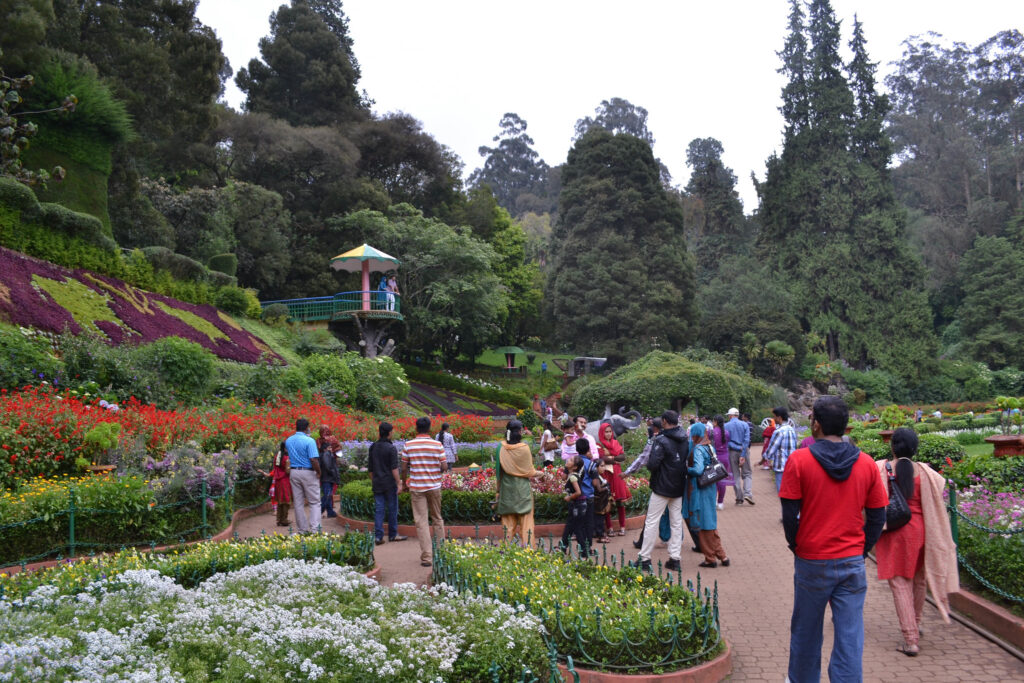Musings by Shekhar Nambiar
Now that the World Cup has ended with the winner Argentina taking it all, it’s time to get on with work and life. It was going to be a fitting farewell to the Golden Ball winner Messi from the tournament when comes the news that he would continue playing for his country. We’ll have to wait and see how this develops.

The final was nail-biting and thrilling. It had its twists and turns with France clinging on almost till the very end. KylianMbappe emerged as the hero and saviour of the French, but that couldn’t help his team and nation retain the title. This young footballer is the proud winner of the Golden Boot award.
Also read: Airports for tomorrow’s aviation
Notwithstanding the reported racist slur against the young and brilliant Mbappe, by and large, things went off smoothly. The unmanageable crowds in Buenos Aires that turned up to welcome the returning Argentine team led to abandoning the players’ movement by buses in favour of transportation by helicopter. Earlier there were hysterical scenes as frenzied fans jumped on to the bus from building tops injuring themselves in the melee.

With this World Cup, Qatar’s stock in the world has gone up. The tournament, stadia and facilities, by all accounts, were fantastic and everything went well with no glitches. There were controversies, most recent of them being allegations of kickbacks by Qatar to European Parliament members. Although not linked to the World Cup, the allegations have kicked a lot of dust in the EU and will take some time to settle. Earlier there were accusations of a Qatari bribe scam to FIFA that seemed to settle down as the tournament progressed.
Also read: Tales from two cities
Watching on big screen
A highlight of the season for me was to catch the live playoff for the third place at the Khalifa International Stadium on the big screen, complete with immersive sound, surround and all. The excitement, pop corns and hot dogs, and above all, watching the match with the cheering crowd, was reminiscent of old times. The match, it must be said, was played with all seriousness. Not once did either team let up and it may well have been the finals.
My football crazy daughter and I cheered as the frenzied fans cried out ecstatically as Croatia scored the goal within five minutes of start of play and an equally exciting equaliser by Morocco. For the rest of the match, it was Croatia, runners-up in 2018, all the way, with their second goal and taking the lead on to the very end. We were neutral. For us it didn’t matter who won. The Croats and the gritty Moroccans had both worked hard to reach where they were.

We however watched the finals on TV, wanting to avoid the Sunday crowd.
Stadia for the future
Stadium 974 near Doha built from recycled shipping containers and with technology to protect spectators and players from the heat will be dismantled soon. The stadium marks yet another milestone – build, use and dismantle. It has been touted as a sustainable engineering masterpiece. Not sure if it can be called totally sustainable.
Also read: School then and now
Built from 974 used shipping containers, which provided space for stairways and restrooms and reduced consumption of water by as much as 40%, the space between seats and aisles were so designed as to provide circulation of air from the Persian Gulf and reducing the load on the cooling system in the stadium. Evidently, the construction costs were kept low with minimum waste. Could this be a model for future stadia? Possibly. The shipping containers and seats from the dismantled stadium structure, apparently, will go towards providing assistance to some less developed countries.

Football unites
To us, as perhaps with most Indians, the excitement of the tournament in Asia made a big difference. It was as close as it could get. Not sure how much money the Qataris made. Statistics and analyses will reveal all that. But for four weeks, the palpable excitement, including in the subcontinent, knew no bounds. As with all games, there were winners and there were losers. There were surprises and upsets. Brazil didn’t make it and so too Spain, England and Germany!
Some of us can take cheer and console ourselves. Morocco, although a North African team, is geographically closest to Asia!
Queen of hill stations
From football to travel. For someone raised to believe the greatness of Shimla, Ooty has always been a distant destination nestled high up in the Nilgiri hills.
Ootacamund, now Udhagamandalam, was what my mother told us about. Toy trains and her visits up there. Just as Shimla, or Simla, conjured up visions of steep hill climbs, views of the mighty Himalayas, and ambling along Mall Road, Ooty was about the incredible climb up the hair-pin bends, pine forests, fresh cool air, Wellington and the view of thick forests around it.

I had a biased perception of Ooty. At home, it was always Ooty vs Simla. My father insisting on the great Shivalik ranges being taller and mightier, after all these are the Himalayan foothills.
At dinner time conversations neither won. Mother insisting on the gentler and perhaps greener Ooty taking the cake, what with its gentle rolling hill tops, beautiful Wellington, north of Coonoor, the lake, botanical garden and the lovely flower show.
Also read: A slice of history and Havana
My father’s point was on Simla being able to offer more adventure, starker and rugged and, yes, the snow-clad Himalayan ranges in the distance was a distinct advantage.
I was never able to totally ignore Ooty’s gentle charm perched as it is atop the Nilgiri hills in the Sahyadri mountains, or the Western Ghats, of which I was in awe of since childhood. It’s only six or seven years since I got to visit Ooty for the first time. And Shimla remains a dream, yet!
Southern comfort
It’s holidays and perhaps most apt to travel to a few southern destinations. Yes, we start with Ooty.

Locationwise, Ooty couldn’t have asked for anything better. Perched high up in the Nilgiris and on a bowl-shaped valley. The town itself is not big but together with Lovedale, and Coonoor and Wellington as suburbs, it is able to add up a lot more area. Ooty, or Udhagamandalam, is the headquarters of Nilgiri district that encompass largely mountain parts and forests.
Also read: The romance of train journeys
Biosphere reserve
Ooty is at the trijunction of three states: Kerala to its west, Coimbatore (Tamil Nadu) and Palakkad (Kerala) in the south, and to the north is Karnataka. It is bound by Kerala ‘s Malappuram on the west.

Doddabetta Peak at 2,700 metres stands tall in the Nilgiris offering visitors a 360-degree view of the surrounding mountains and forests. The distant view of Coimbatore in the plains below, mostly misty, is breath-taking. Occasionally you catch planes passing by on to Kerala or making the descent to Coimbatore.
The pristine forests around Ooty are rich in flora and fauna and friends living in Glenmorgan, a few kilometres away, is a must-see for the adventurous and the trek here from Ooty is simply awesome.
A friend who has a cottage in Glenmorgan will attest to hearing the call of the big cats, including the tiger, the greatest of wild hunters. The Nilgiri Biosphere Reserve is surrounded by the Mudumalai Tiger Reserve, Attapadi forest reserve and Wayanad, farther north west, both in Kerala, and Bandipur, with Nagarahole, in the north.
South of Ooty, the ranges slope down into the natural Palghat gap and the famous elephant corridor. Beyond Palghat, the Western Ghats once again rise majestically catching the rain-laden clouds to gift the Kerala coast its famed southwest monsoon and the romance associated with it. The leeward side keeps the flat plains relatively dry, with the exception of Palani Hills, the outcrop in the Western Ghats, and Kodaikanal and the lesser hills such as Yercaud on the east.
Unpretentious Kodaikanal
Kodaikanal is a quaint hill station sans the pretentions of Ooty or Shimla. The place has good lodges and hotels and fantastic restaurants that can be quite affordable during the off-season. There are some really quaint cafés lining up the main streets that offer a quiet and peaceful retreat. It’s a popular locale for film shooting, boasts a lovely golf course, and breath-taking views. Munnar, the highly popular hill destination in Kerala, is easily accessible from here through thick forested areas.

An even better option into Munnar would be through Theni town – also approachable from Madurai – and beyond, up almost a vertical climb from the plains below. But for a thorough drug smuggling check of the car at the Kerala border, the ride up is incident free. Once on the top, the drive gets pleasanter as you catch the lofty hills and mountains, the cool air, and crystal-clear lakes in view in valleys of Idukki district below.
A couple of days at Munnar in Idukki district, savouring great Kerala cuisine in an equally exciting wet weather, and it’s time to take the next exciting part, Thekkady to see wild elephants, the Periyar Tiger Reserve for a glimpse of the elusive big cat and their prey base of deer and hogs, wild bison, as well as some really exotic birds.
On to Vagamon, some 100 km south west of Munnar, in Idukki and partly in Kottayam districts. The town’s attraction is its relatively untouched flora and fauna but that is under threat from the growth of reckless tourism. The place offers quite trekking opportunities and paragliding. Farther a hundred kilometres to north-northwest is Kochi, my last destination in Kerala.
Sweet Kochi
My travels end in the beautiful, energetic and booming city of Kochi. Every time I enter Kochi, my heart misses a beat! I have said this before and I will do so again and again.
There’s something about the city. Kochi has been a melting pot of cultures, religions and cultures for centuries, exposed as it has been to sea farers from distant lands. Muziris, or present-day Kodungallur, was the site of an ancient port that saw sailors and traders visit Kerala. The oldest and first mosque and earliest churches all came up in places at Muziris or around.
The celebration of Muziris takes place every two years in the form of the Kochi-Muziris Biennale. And I hope to catch the ongoing festival. More about it, hopefully, next week. Until then, goodbye and happy Christmas!
Also read: A festival goes global





[…] Musings by Shekhar Nambiar Now that the World Cup has ended with the winner Argentina taking it all, it’s time to get on with work and life. It was going to be a fitting farewell to the Golden Ball winner Messi from the tournament when comes the news that he would continue playing for his country. We’ll have to wait and see how this develops. Mbappe and Messi The final was nail-biting and thrilling. It had its twists and turns with France clinging on almost till the very end…. Read More… […]